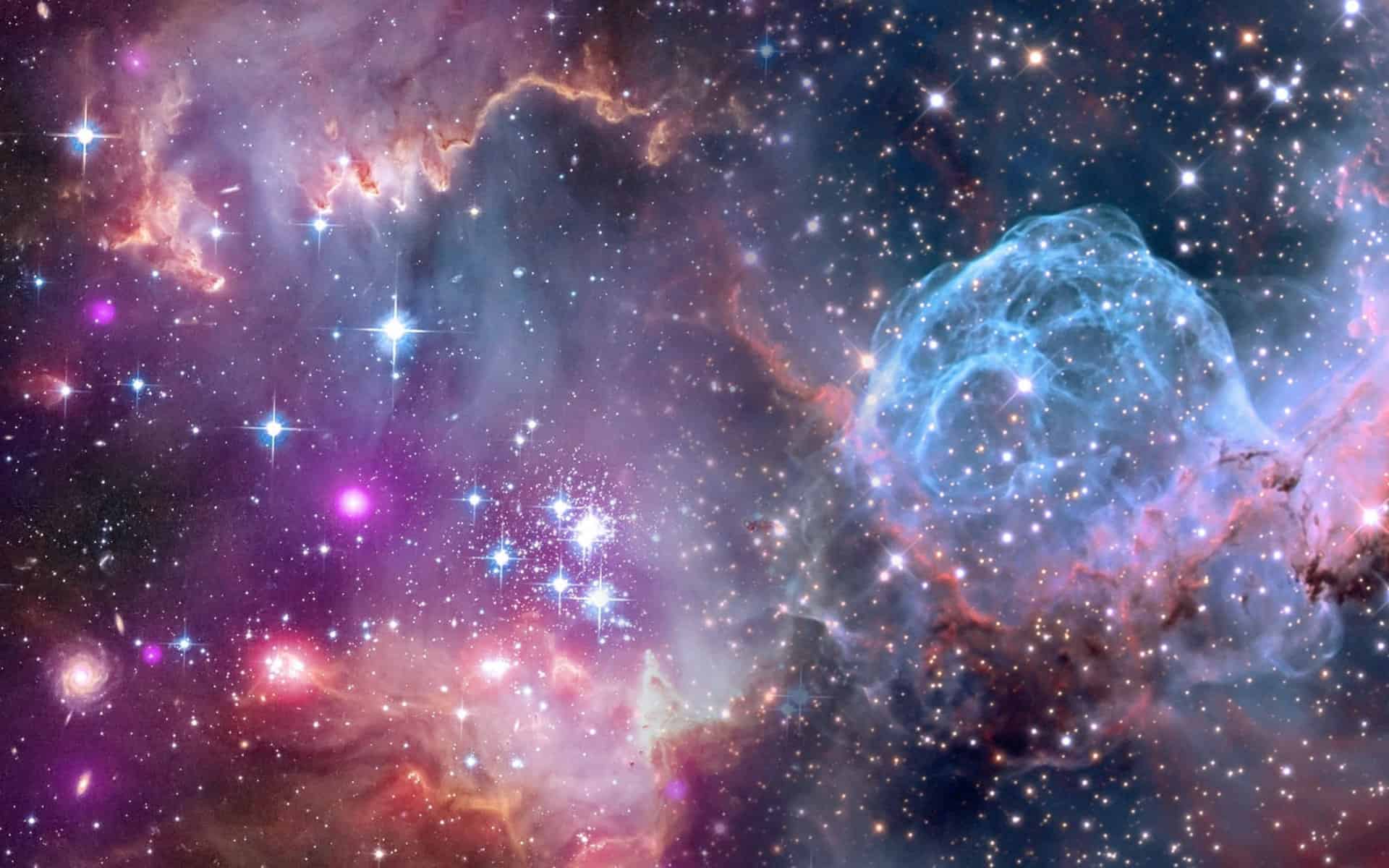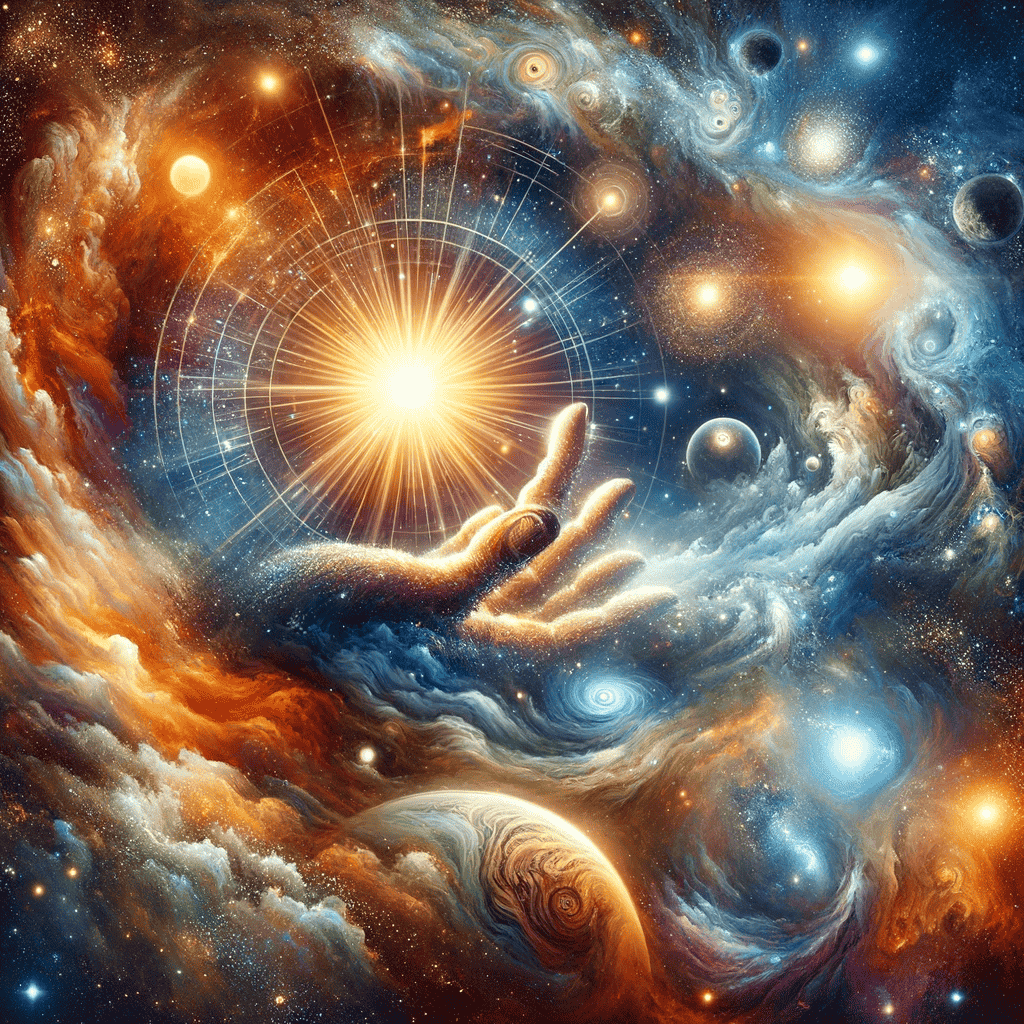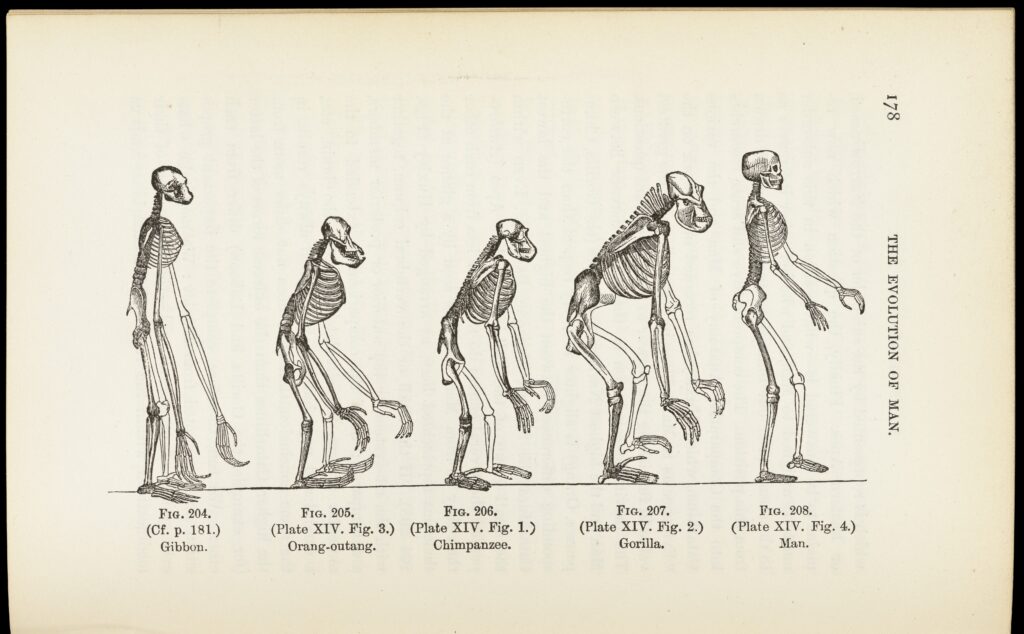Summary
The Big Bang theory is the foundational concept in cosmology. It depicts the universe’s birth from an intensely hot and dense state and its continuous expansion.
- Current research and potential challenges to the Big Bang theory, including the roles of dark matter and dark energy, are also explored.
- The Big Bang theory describes the universe’s origins from a hot, dense singularity, explaining cosmic expansion and the formation of galaxies.
- It includes significant evidence, such as cosmic microwave background radiation and the abundance of light elements, reinforcing its status as the leading cosmological model.
- The article addresses the theory’s philosophical and theological implications, discussing how various Christian perspectives reconcile or conflict with the Big Bang.
Estimated reading time: 17 minutes
Introduction
The Big Bang theory was a groundbreaking scientific advancement of the 20th century that has transformed our knowledge of the cosmos. Since it became known to the scientific community in the 1930s, it has challenged the scientific world to find supporting evidence and examine the profound implications for cosmology. The model has faced challenges and competing alternative theories and has been modified in light of new discoveries. But it has withstood tests and remains the dominant scientific model of the universe’s origins.
Despite near universal acceptance in the scientific community some Christians remain skeptical and assert that the Big Bang Theory contradicts their belief in a Creator God or their understanding of the biblical Creation account in Genesis. Other Christians do not see this conflict and accept the model as a good scientific description of how God created the universe.
The Big Bang Theory Overview
The Big Bang theory proposes that our universe began as an incredibly hot and dense singularity – a tiny, infinitely dense point. This singularity contained all the matter, energy, space, and time that eventually formed the entire universe. The term “Big Bang” describes this singularity’s explosive expansion and cooling, which gave rise to everything we see today.
According to the theory, the universe has been expanding ever since that initial event. This expansion, fueled by the energy released during the Big Bang, causes galaxies and celestial objects to move away from each other. As the universe expands, it cools down, allowing matter and energy to take on the familiar forms we know today.
The Big Bang Theory explains the universe’s origin and how galaxies and cosmic structures formed. As the universe expanded, regions of higher density attracted matter, which led to galaxy formation. Over billions of years, gravitational pull caused matter to collect into galaxies, clusters, and superclusters, creating the cosmic web we see today. This structure emerged from the initial conditions set by the Big Bang, and abundant evidence supports its principles.
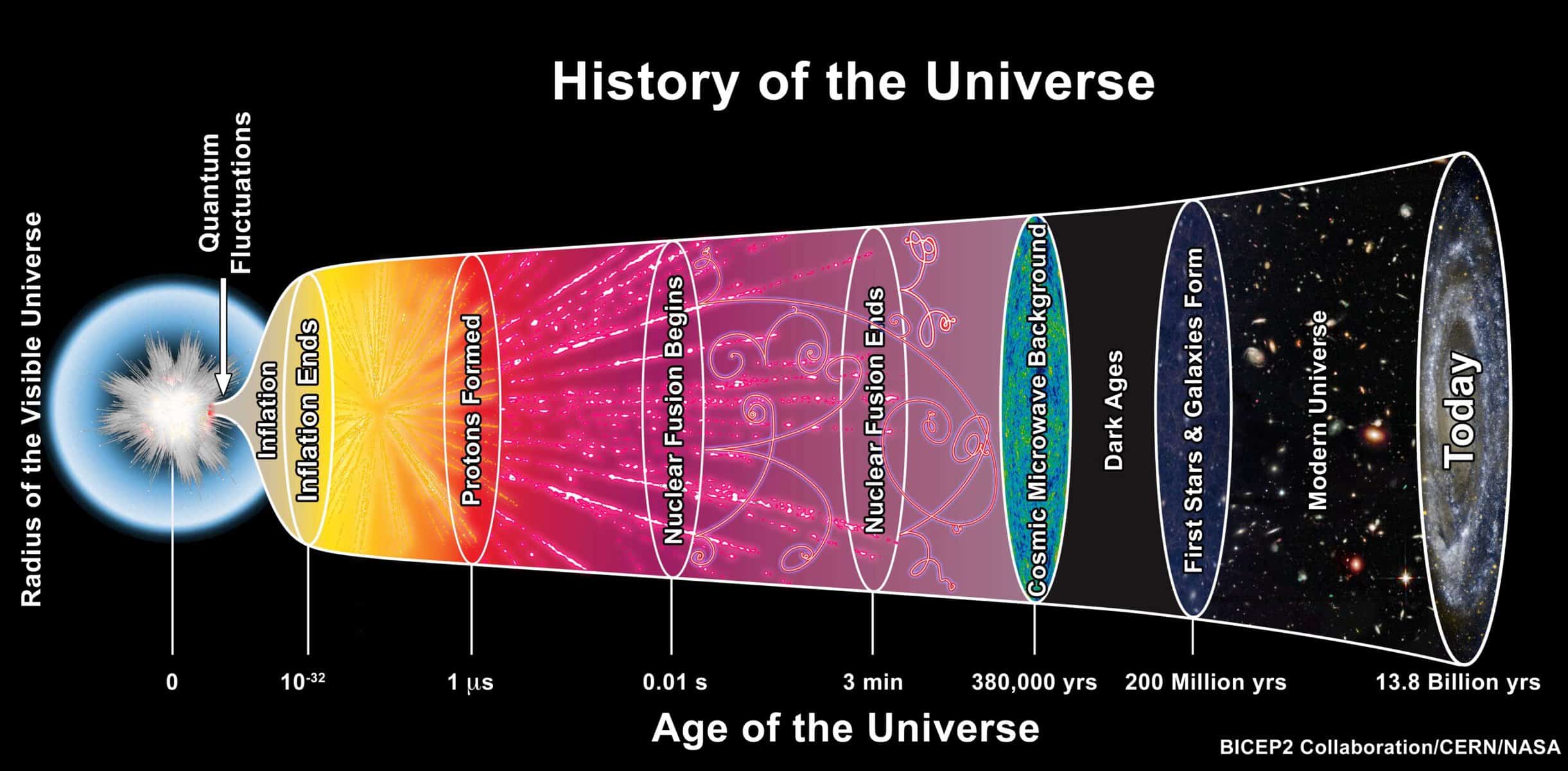
Historical Context
The Big Bang Theory revolutionized scientists’ understanding of the universe’s origins. Throughout history cultures and civilizations have had their own ideas about the universe’s creation that blended their mythology and philosophy. In the 16th century, Copernicus advanced the understanding of cosmology significantly when he challenged the prevailing geocentric view of the ancients with his heliocentric model. Understanding that the Sun is at the center of the solar system and the earth revolves around it launched the scientific revolution. However, a definitive theory of the universe’s origin remained elusive until the early 20th century.
Introduction of the Big Bang Theory and support from Hubble’s Law
In 1927, a Catholic priest and theoretical physicist from Belgium named Georges Lemaître proposed a solution to the equations of General Relativity by making a case for an expanding universe. He suggested it originated from a denser and hotter state in the past. Although Lemaître was unaware of it at the time, in 1922 a Russian mathematician named Alexander Friedmann had proposed mathematical models that came to similar conclusions. Both men’s findings went largely unnoticed at the time they were published.
By 1930, astronomer Edwin Hubble, using the world’s largest telescope, had documented surprising empirical evidence for an expanding universe. He observed that the light from distant galaxies showed a redshift, indicating they were moving away from us, and that this movement happened at speeds proportional to their distances, a phenomenon formalized as Hubble’s Law. Around this time the prominent scientists Arthur Eddington, Willem de Sitter, and Albert Einstein had concluded that the static models of the universe they had worked on for many years were not satisfactory and began to pay attention to Lemaître’s work.
The term “Big Bang” was initially coined by the English astronomer Fred Hoyle as a way of dismissing the theory, but the nickname became popular over time and eventually became synonymous with Lemaître’s model of the expanding universe’s origin.
The Discovery of Cosmic Microwave Background Radiation
Evidence supporting the Big Bang theory continued to accumulate throughout the 20th century. In 1965, astronomers Arno Penzias and Robert Wilson accidentally discovered faint, uniform radiation that filled the entire universe. This was cosmic microwave background radiation, the cooled remnant of the first light that could ever travel freely throughout the universe. It is the lingering glow from the early universe when it was hot and opaque.
This is exactly what scientists would expect to find if the universe had indeed started with the expansion of an extremely hot, dense object. As the universe expanded and cooled, photons that were once tightly connected with matter were released to travel through space. These ancient photons journeyed unaltered for billions of years until they reached us, and we detected them as CMBR. Precise measurements of this radiation align remarkably well with the predictions of the Big Bang Theory, presenting robust evidence for its validity.
Nucleosynthesis Leads to Abundance of Light Elements
The relative abundance of light elements such as hydrogen, deuterium, helium-3, helium-4, lithium, and beryllium in the universe also supports the hypothesis that the universe was once much hotter and denser than it is now. Nucleosynthesis is the creation of new atomic nuclei, the parts of atoms that are made up of protons and neutrons. Nucleosynthesis first occurred immediately after the Big Bang, when the universe was extremely hot and dense. At that time, a plasma made up of particles known as quarks and gluons, condensed into protons and neutrons. As a result, hydrogen, helium, and trace amounts of other light elements were formed.
The observed abundance of light elements in the universe aligns with the predictions made by the Big Bang theory. The ratios of hydrogen to helium and the fraction of heavier elements match the expected values calculated based on the early universe’s conditions. This remarkable agreement between theory and observation provides strong backing for the validity of the Big Bang Theory.
These three lines of evidence, the observed expansion of the universe, the discovery of CMB radiation, and the abundance of light elements solidified the Big Bang Theory’s place as the best scientific model of the universe’s origin and paved the way for the current scientific understanding of the cosmos.
Challenges and Modifications to the Big Bang Theory
The Big Bang Theory has been a successful framework for understanding the universe’s origin and development. However, it faced challenges and required adjustments as scientists made further observations that introduced new complexities. Scientists have proposed refinements to address these issues.
Inflationary Cosmology and the Flatness Problem
The original Big Bang theory faced a “flatness problem” because the universe appeared remarkably flat on large scales. This suggested a perfect balance between its density and expansion rate, which would require a remarkable degree of fine-tuning. In the 1980s, inflationary cosmology emerged as a solution. This theory proposes rapid early-stage expansion that smoothes out irregularities, explaining the observed flatness.
Inflationary cosmology suggests the universe expanded exponentially immediately after the Big Bang, stretching quantum-sized fluctuations to cosmological scales. These fluctuations acted as seeds for galaxy and cosmic structure formation. The inflationary model elegantly solves the flatness problem and aligns with other observational data, including cosmic microwave background radiation uniformity.
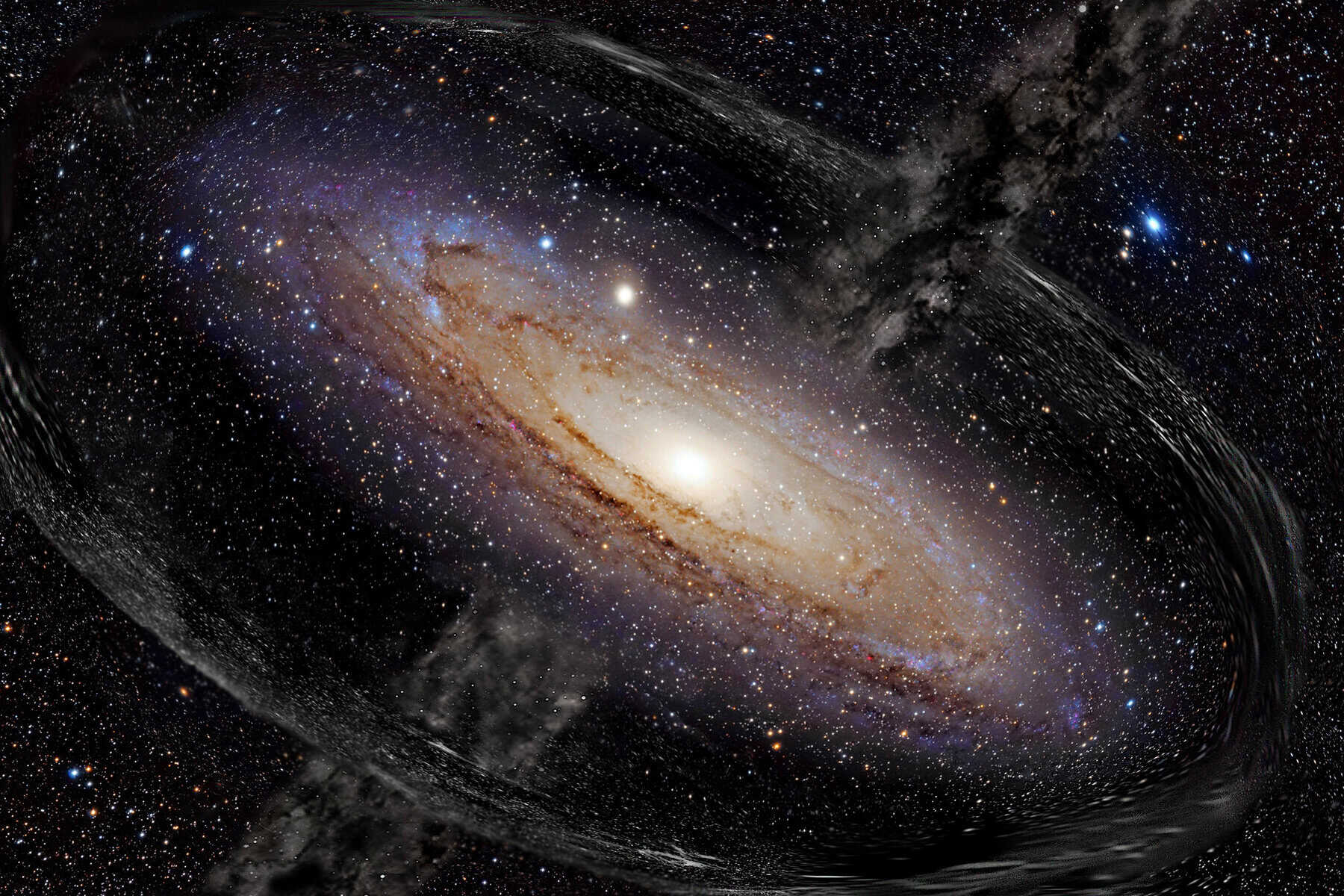
Dark Matter and its Role in the Universe
The Big Bang Theory faced a challenge when it came to understanding galaxies’ dynamics. Visible matter can’t explain their behavior. Scientists proposed the existence of dark matter, a mysterious form that doesn’t interact with light but exerts gravitational forces, solving the puzzle of what appears to be missing matter.
Although its nature remains mysterious, various observations support dark matter’s existence. Positing the existence of dark matter modified the Big Bang Theory by explaining the missing mass problem and unveiling insights into the cosmos’ large-scale structure.
Dark Energy and the Accelerating Expansion of the Universe
In the late 1990s, a surprising twist emerged in the story of the universe’s expansion. Observations of distant supernovae showed they appeared dimmer than expected, revealing that the universe’s expansion is accelerating, not slowing down due to gravity.
This led to the concept of dark energy—a mysterious energy filling space, driving the universe’s accelerated expansion. Dark energy is believed to exert negative pressure, countering gravity’s attractive force. Though poorly understood, dark energy is essential to explain the expanding universe’s dynamics.
Including dark energy in the universe modified the Big Bang Theory, accounting for accelerated expansion and adding complexity to our understanding of the cosmos. These updates reflect the ever-evolving nature of scientific inquiry, enriching the Big Bang Theory and inspiring further exploration and discovery.
Most recently, the James Webb Telescope has detected galaxies that challenge current cosmology models, returning data that suggests stars and galaxies were forming much faster than anyone expected. Although new simulations have been able to account for some of the unexpected observations, some bright, massive, and early galaxies continue to raise questions for theorists. Our fundamental understanding of early galaxy formation could shift in the coming years.
Alternative Theories and Criticisms
Although the Big Bang Theory is widely supported by evidence, it isn’t without its challengers. A small minority of scientists and theorists have proposed alternative ideas to challenge or complement it.
Steady State Theory and its Proponents
The Steady State Theory is a significant alternative to the Big Bang, proposing the universe has always existed and undergoes constant creation. In contrast to the Big Bang’s singular event, Steady State suggests continuous matter creation maintains a stable universe.
Proposed in the late 1940s by Hermann Bondi, Thomas Gold, and Fred Hoyle, the theory posits that new matter fills expanding gaps, ensuring the universe’s consistency on large scales.
Though it gained popularity in the 1950s and 1960s, Steady State faced significant challenges from empirical evidence like cosmic microwave background radiation. The uniformity of this radiation conflicted with Steady State’s continuous matter creation and led to the theory’s widespread rejection as a viable alternative to the Big Bang Theory.
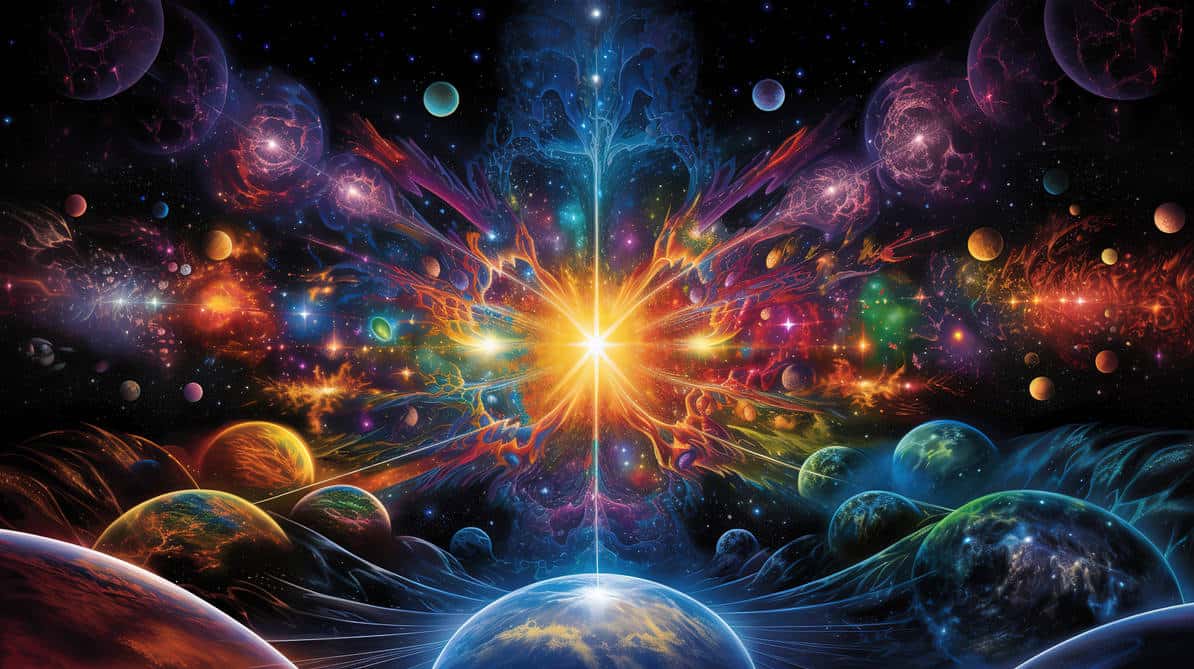
Multiverse Theories and Their Implications
In recent years, the idea of the multiverse has gained attention. Multiverse theories propose the existence of numerous universes, each with unique physical laws and properties. Our universe may just be one among countless parallel universes.
This concept emerged from attempts to explain aspects of reality like the fine-tuning of physical constants and the anthropic principle, the observation that the universe is perfectly suited for intelligent life. Multiverse theories propose that with countless universes having different properties, it is not surprising our universe fosters life.
Yet, the multiverse concept remains speculative and impossible to support with direct empirical observation. Critics argue it leans more toward philosophy and metaphysics than scientific theory due to the lack of empirical testability. Nonetheless, the concept continues to captivate the scientific community, driving the pursuit of a deeper understanding of the cosmos.
Philosophical and Religious Implications of the Big Bang
The Big Bang theory has sparked intriguing philosophical and religious discussions. With the notion of the universe having a beginning, questions arise about time, causality, and the ultimate origin of existence. Philosophers and theologians ponder how this theory impacts our understanding of reality and humanity’s place in the cosmos.
Acceptance of the Big Bang by religious people varies across faith traditions. Some Christians view it as aligning with the Genesis creation account, which they see as a poetic description of God creating the universe rather than a scientific explanation. Others see the Big Bang Theory’s affirmation that the universe had a definite beginning as affirming their belief in a Creator.
However, some people who believe in a Creator God express concerns about conflicts between scientific theories like the Big Bang, which they see as attempting to eliminate God from the story of Creation, and their traditional religious beliefs. These debates exemplify the ongoing dialogue between science and religion as people strive to harmonize scientific discoveries with their worldviews.

Christian Perspective on the Big Bang
The Big Bang Theory has stirred discussions among Christians, who hold diverse interpretations of scripture and different approaches to theological questions.
Christian beliefs on creation encompass a range of perspectives influenced by factors such as scriptural interpretation, theological traditions, and personal convictions. At the core, most Christians affirm that God is the ultimate creator of the universe. However, the specific understanding of how God brought about creation varies.
Different Interpretations of Genesis and the Big Bang
The creation account in Genesis holds a central place in Christian beliefs. However, Christians interpret it differently, leading to various approaches to reconciling it with the Big Bang Theory.
Some Christians take a literal view, believing in a six-day creation. The Big Bang Theory depends on deep time and the model requires billions of years for galaxies to reach their current state. This may pose challenges for Christians who think the Bible teaches the Earth is around 6,000 years old.
Others see Genesis as conveying spiritual truths, not offering a scientific or historical account of the beginning of the universe. They acknowledge that science explains the “how” of creation, while theology delves into the “why” and the deeper meaning. Some theologians propose that the Big Bang is a part of God’s creative plan. They see it as a description of the natural processes initiated by God. Thus, the Big Bang is a testament to God’s creative power and purpose, not a contradiction of their religious convictions.
Seeing God’s work in creation as a gradual, ordered process may give them a deeper appreciation of the vastness of God’s work. The idea of an expanding universe from a singular beginning to the emergence of galaxies and life aligns with the concept of a God who continuously sustains creation.
Views of Prominent Christian Scholars on the Big Bang
Prominent Christian scholars enrich the dialogue on the Big Bang’s connection with faith and science. For instance, Francis Collins, a renowned geneticist and devout Christian, finds the Big Bang compelling evidence for a transcendent creator. He sees the precise physical laws and fine-tuning of constants required for the universe’s existence as signs of God’s design.
John Polkinghorne, a physicist and Anglican priest, explored the interplay of science and theology. He saw the Big Bang as affirming the biblical concept of creation ex nihilo (creation out of nothing). Polkinghorne emphasized understanding God’s creation through both scientific and theological lenses.
These examples highlight the diverse perspectives within the Christian community on the Big Bang Theory. Christians continue their dialogue, seeking to reconcile science and faith and marvel at the wonders of creation.
Current Research
Cosmology is an exciting and ever-evolving field that drives our quest to comprehend the vast universe. Scientists worldwide are actively involved in various observational and theoretical studies, each contributing to our deeper understanding of the cosmos.
Ongoing Observations and Experiments
Astronomers and cosmologists actively explore the mysteries of the Big Bang and the universe. Cutting-edge telescopes and instruments aid in examining various aspects of the cosmos. They map the universe’s large-scale structure and investigate dark matter and dark energy properties.
A key focus is the cosmic microwave background radiation (CMBR) study. High-precision observations reveal insights into the early universe and post-Big Bang conditions. Projects like the Atacama Cosmology Telescope (ACT), the Planck satellite mission, and the upcoming Simons Observatory aim to precisely measure CMBR temperature fluctuations, shedding light on the universe’s structure and evolution.
Research also targets the study of large-scale structures. Galaxy surveys like the Sloan Digital Sky Survey (SDSS) and Dark Energy Survey (DES) map galaxy distributions and unveil the cosmic web-like structure. These surveys provide vital information about cosmic structure growth and the influence of gravity, dark matter, and dark energy.
Quest to Understand the Nature of Dark Matter and Dark Energy
Dark matter and dark energy continue to perplex cosmologists. Researchers use lab experiments, astronomical observations, and theories to explore their nature.
Underground detectors like LUX and XENON1T search for direct evidence of dark matter interacting with ordinary matter. Particle colliders, including LHC, seek to produce dark matter particles or detect indirect signals.
Astronomers refine measurements of the universe’s accelerating expansion through telescopes like DES, DESI, and Euclid surveys. With these telescopes, they gather precise data on dark energy’s properties and its impact on the universe’s fate. As we unravel these cosmic enigmas, exciting discoveries await.
Conclusion
The Big Bang theory has graduated from speculation to a well-established scientific framework. It shapes our understanding of the universe’s vastness and origin. Its significance is immense, laying the groundwork for further discoveries. It reminds us of the endless wonders awaiting our comprehension as we explore the cosmos and its secrets.
FAQ: Understanding the Big Bang
The Big Bang is the prevailing scientific theory that explains the origin of the universe. It suggests that the universe began as a singular, extremely dense point about 13.8 billion years ago and has been expanding ever since.
Many Christians see no conflict between the Big Bang theory and their faith. Some believe that the Big Bang is the method through which God created the universe. Others emphasize that scientific explanations of “how” the universe came to be can coexist with the biblical understanding of “why” it exists.
The main evidence includes the observation of the universe’s expansion (redshift of galaxies), the discovery of cosmic microwave background radiation (the afterglow of the Big Bang), and the abundance of light elements such as hydrogen and helium, which align with predictions made by the Big Bang model.
The Bible is not a scientific text and does not specifically address modern scientific theories like the Big Bang. Some Christians interpret the creation narrative in Genesis symbolically, while others adhere to a more literal interpretation. The relationship between the Bible and scientific theories can vary depending on personal beliefs and theological perspectives.
The Big Bang is the most widely accepted theory based on current scientific evidence, but there are other hypotheses, such as the steady-state theory and various models in quantum cosmology. However, none of these alternatives have garnered as much empirical support.
For some Christians, the Big Bang aligns with the belief in a Creator who brought the universe into being. Others may hold a creationist perspective that adheres to a literal interpretation of the Genesis account. Theologians often discuss how the Big Bang can inspire awe and deepen one’s understanding of God’s creative power.
Yes, many people of faith, including Christians, believe that science and faith are compatible. They may see the Big Bang as the process God used to create the universe. This perspective allows them to embrace both the findings of modern science and their belief in a divine Creator.
The Big Bang can raise questions about the nature of time, creation, and the role of God in the universe. Some theologians argue that the theory supports the idea of a transcendent Creator who exists outside of time and space. Others engage with the concept to explore deeper questions about purpose and existence.
Many scientists maintain that the Big Bang is a scientific theory and avoid making theological statements. However, there is a growing dialogue between science and religion, with some scientists open to discussing how the two can inform and enrich each other.
Faith can provide meaning and purpose beyond the scientific explanation of the universe’s origin. For believers, understanding the Big Bang through a lens of faith can enrich their appreciation of God’s power and the complexity of creation, while still embracing scientific discoveries.
For Further Study
- Dwell– An App to help you listen to, read along, memorize, and study your favorite Bible versions.
- Creation and the Big Bang: How God Created Matter from Nothing by Clare Raynard Magoon Jr.- Creation and the Big Bang link God’s creation “from nothing” with science, suggesting God initiated the universe’s expansion through the Big Bang, blending faith and scientific understanding.
- Logos– Gain more insights during your Bible study with Logos Bible software.
The aforementioned partner products are affiliate links which means that we may receive a commission if you purchase through our links but this comes at no additional cost to you.
What do you think? Please share your thoughts below.
Too often, people answer faith questions with dogmatic certitude and neglect the historical diversity and complexity of Christian ideas. The Questions Project is a resource that responds to questions about faith, history, and scripture in a way that honors the historical diversity and complexity of Christian thought. But this is a work in process, and we need your help. Please provide feedback. We are particularly interested in knowing what we missed and how to improve our responses. Please keep all comments kind or risk deletion.

